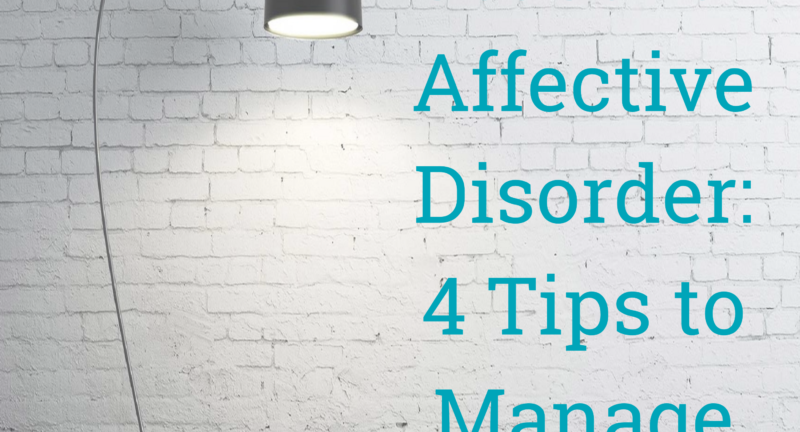
What Is Growth Mindset?
“In a growth mindset, people believe that their most basic abilities can be developed through dedication and hard work—brains and talent are just the starting point. This view creates a love of learning and a resilience that is essential for great accomplishment.” (Dweck, 2015)
When a child has a growth mindset, he or she believes that his talents can be developed through hard work, determination, practice, and so on. In contrast, a child who has a fixed mindset believes that he is born with a certain amount of talent (or intelligence) and that can never change no matter how much effort (studying, practice) they put forth.
Having a Growth Mindset Is Important
Having a growth mindset is important as an adult. In fact, it’s something that employers want to see in their employees. If you — as an employee — believe that you can learn and become more skilled and intelligent, you’ll be a hard worker and contribute a lot to the company. An “I can’t” statement won’t stop your success.
A growth mindset isn’t just important for adults though. It’s so important for a child’s mental well-being and his success in school too. As a student, your child will be more open to learning new things with a growth mindset. Having a growth mindset also helps to shape positive self-talk, increased confidence, and self-esteem.
Growth Mindset Versus Fixed Mindset: What’s the Difference?
What is the biggest difference between a growth mindset and a fixed mindset? One of the biggest differences is how a person (whether that’s a child or an adult) handles criticism and mistakes. A person with a growth mindset sees mistakes as learning opportunities, while someone with a fixed mindset sees mistakes as failures and takes all criticism to heart.
Watch the following video to learn more about the differences between these two mindsets.
Teaching Growth Mindset to Your Child
As a parent, one of the greatest gifts you can give your child is to teach him to develop a growth mindset. Here are nine strategies to do so.
1. Show your child that your brain is malleable.
Your brain can grow, but how do you teach this to your child?
According to Dr. Dan Siegel, M.D. author of The Whole-Brain Child, children start to develop a growth mindset just from learning about how their brain works and grows. How cool is that? Developing a growth mindset literally starts by talking about your brain!
Once your child understands that his or her brain physically grows connections as they practice and learn new skills, it’s more likely that he’ll become excited about the learning process — and feel less worried about making mistakes.
 So how do explain all the wiring in the brain?
So how do explain all the wiring in the brain?
Dr. Siegel explains it in a simple sentence:
““When neurons fire together, they grow new connections between them. Over time, the connections that result from firing lead to “rewiring” in the brain.”
2. Teach your child about the two mindsets.
Once your child knows that his brain can grow (when neurons form new connections), it’s time to explain the two mindsets to your child: fixed and growth. This fun video explores how a friendly monster learns about the importance of developing a growth mindset.
3. Model growth mindset thinking and behavior.
You’ve probably heard the phrase: children model what you do, not what you say. Indeed, children model your behavior and that includes growth mindset thinking too.
“As children develop, their brains “mirror” their parent’s brain. In other words, the parent’s own growth and development, or lack of those, impact the child’s brain. As parents become more aware and emotionally healthy, their children reap the rewards and move toward health as well,” Dr. Dan Siegel says.
So how do you model growth mindset thinking? The easiest way to model thinking is to let your children overhear you “think” out loud. Here’s an example:
- You’re attempting to make a new recipe from a new cookbook, but it’s just not turning out the way you want.
- You could say “This is too hard” but that’s not growth mindset thinking.
- Instead, say something like “This is harder than I expected it to be. I better keep practicing until I get the hang of it.”
The more you model this type of thinking, the more your children will pick up on it.
4. Discuss positive and negative self-talk.
When you’re teaching your child about growth mindset, it’s important to give them the tools to succeed, and one of the tools is positive self-talk statements. 
Want your own positive self-talk poster? Download your free poster here: 10 Growth Mindset Statements
Tip: If you hang it up in your child’s room (or your homeschool room), laminate it first.
5. Look for effort.
Remember to set the value on effort rather than perfection. For example, your child can’t control if he is successful in every endeavor, but he can try to be successful in every endeavor — and that makes all the difference.
Recognize your child’s efforts, and this is true even when your child succeeds too.
For example, you might be tempted to say “Good job getting that home run!” Although it’s great that he performed well, don’t forget to praise the effort. You can try something like, “Wow, I saw you work really hard to run that final stretch! Your hard work paid off!”
6. Incorporate “yet” into your vocabulary.
If you have small children, you have probably heard your fair share of “I can’t” statements.
I can’t tie my shoes.
I can’t rollerblade.
I can’t ride my bike without training wheels.
Those statements might be true, but they are coming from a fixed mindset, and one simple 3-letter word can transform those sentences into growth mindset statements.
I can’t tie my shoes… yet.
I can’t rollerblade… yet.
I can’t ride my bike without training wheels… yet.
And just like that, your child is ready to grow. He might not be able to ride a bike (yet), but it begs the question: what can I do to reach that goal? By teaching your child to think this way, it adds hope and optimism to their way of thinking.
7. Help your child create S.M.A.R.T. goals.
Carrying on from the previous point, you can use the oh-so-powerful “yet” to help your child create goals. Going back to the bike riding example, what goals can be created to reach the goal? Whatever goals and milestones, make sure your goals are S.M.A.R.T.

Here’s an example:
- S = Specific – I will learn to ride my bike without training wheels by September 3.
- M= Measurable – I will succeed when I can ride around the block on my bike completely unassisted without any training wheels without stopping/falling.
- A = Achievable – With daily practice, yes, this is achievable and within the realm of possibility.
- R = Relevant – There are many benefits to reaching this goal. Not only will I be proud of myself, but now I can go on the bike trail with my family.
- T = Timely – By September 3.
Tip: You can use S.M.A.R.T goals for your own personal goals too!
8. Celebrate mistakes as learning opportunities.
“If you want to grow, you need to get over any fear you have of making mistakes.” John C. Maxwell
It can be uncomfortable and embarrassing to make a mistake, but the reality is that mistakes can be powerful (and even life-changing) opportunities to grow. Here’s another way to look at it: “There are no mistakes or failures, only lessons.” Denis Waitley
So how do you teach your child to see a mistake as a learning opportunity? You can start through conversations. After a mistake (such as waiting until the last minute to complete a big project and then not doing so great), ask your child what she will do differently next time. Although a rushed project and a poor grade isn’t great, it teaches a very memorable lesson about the importance of not procrastinating.
You can also share your own mistakes from the day and what you learned from them. After all, it’s 100% possible to learn from other people’s mistakes too!
9. Avoid labels.
Most parents know that negative labels aren’t good for a child’s mental health. “You’re so lazy” or “You’re such a bully” are detrimental, but even “good” labels can be problematic. “You’re so smart” might seem like a good label, but the reality is that any label can place a child into a fixed mindset.
Instead of using labels, comment on your child’s efforts. The goal is to help your child believe that (regardless of his or her natural talents) that he can always continue to grow, and real growth is linked to time and effort.
Growth Mindset and ADHD
People with ADHD tend to have innate negative thinking patterns, which have been reinforced by years of shame. In fact, shame is often linked to ADHD. After years of internalized messages of “I’m lazy” or “I can’t do this”, it becomes necessary to undo years of negative, fixed mindset thinking.
Shifting to a growth mindset is beneficial for children and adults alike. A growth mindset can:
- Empower you to feel in control of your own emotions and actions
- Manage unwanted reactions and emotions
Start the School Year with Confidence
 Are you searching for actionable strategies to motivate and encourage your ADHD child? In addition to practicing these growth mindset strategies, your child may benefit from professional care. We’re proud to offer a multidisciplinary and holistic approach to you and your child’s mental health needs. Dr. Kristi Briscoe is a board-certified pediatrician specializing in effective medication management, parent coaching, and proven strategies to motivate and encourage children with ADHD.
Are you searching for actionable strategies to motivate and encourage your ADHD child? In addition to practicing these growth mindset strategies, your child may benefit from professional care. We’re proud to offer a multidisciplinary and holistic approach to you and your child’s mental health needs. Dr. Kristi Briscoe is a board-certified pediatrician specializing in effective medication management, parent coaching, and proven strategies to motivate and encourage children with ADHD.
To make an appointment, call us at 502-907-5908. You can also request an appointment here.
Related Posts
Seasonal Affective Disorder and ADHD: 4 Tips to Fight Depression
Do shorter days and darker nights have you feeling a little blue? Seasonal...
Holistic ADHD Treatment: What Does That Mean?
Around 6.4 million American children and teens live with attention deficit...


